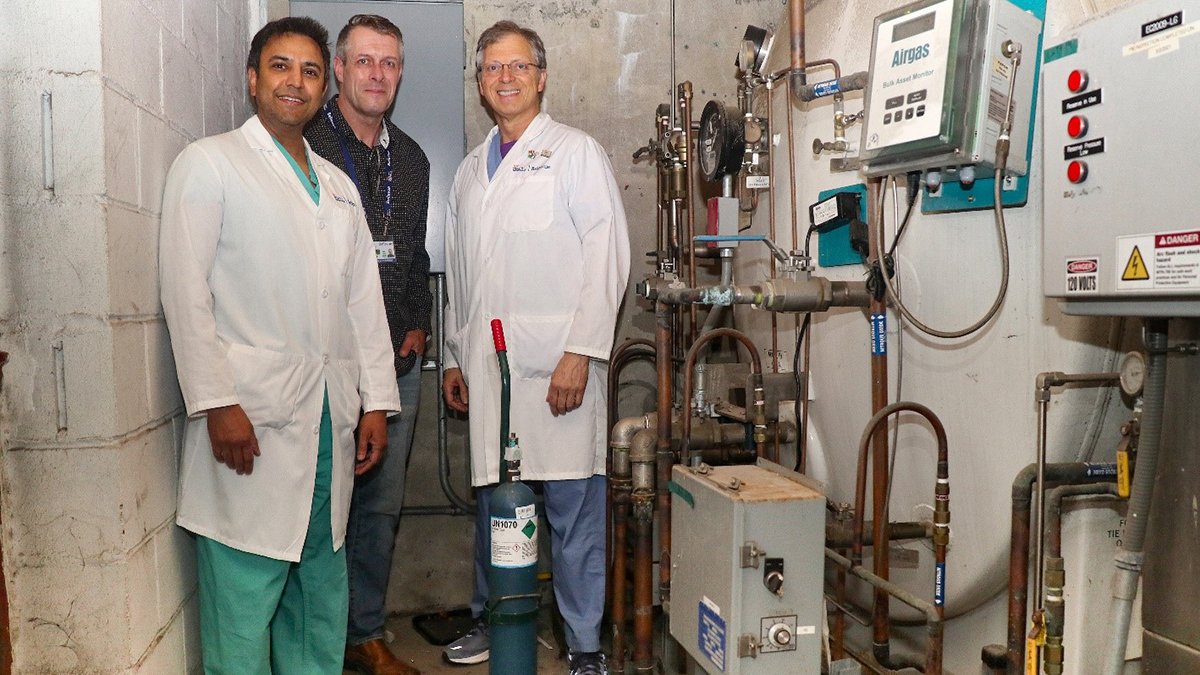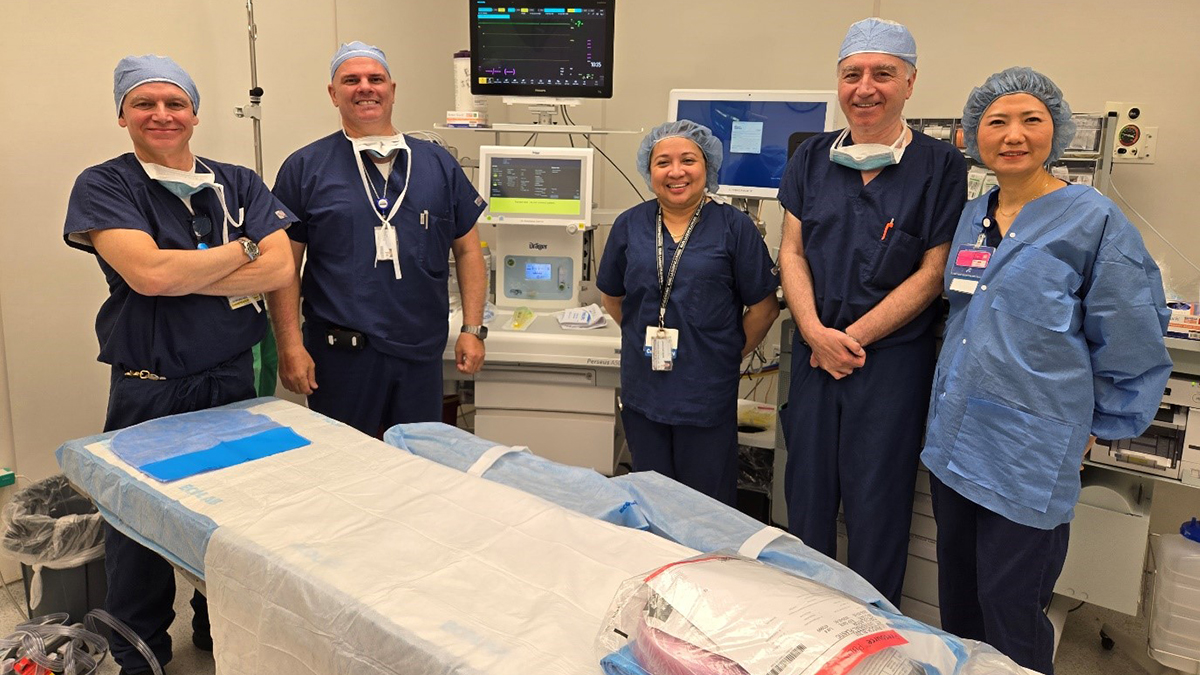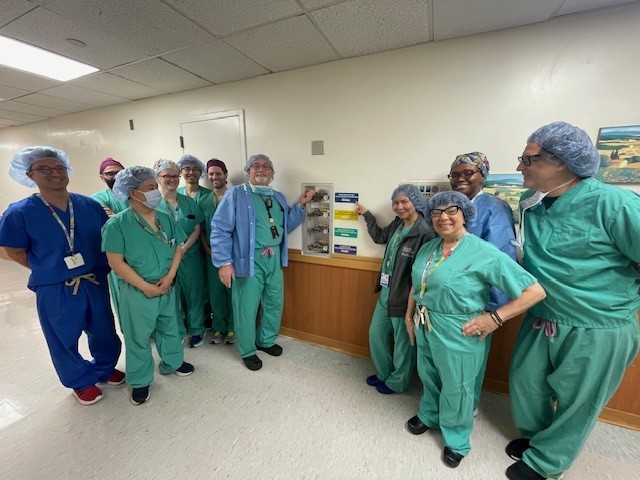NYC Health + Hospitals Cuts Annual Anesthesia-Related Carbon Emissions by Over 50% through Deactivation of Central Piped Nitrous Oxide Systems
NYC Health + Hospitals/Bellevue, Elmhurst, Jacobi, and North Central Bronx have fully deactivated the use of central piped nitrous oxide in their anesthesia practices Collective carbon dioxide emissions reductions as a result of facility deactivations and more efficient use of anesthetic gases amount to over 5,000 metric tons
Apr 16, 2025

NYC Health + Hospitals today announced that the public health system has achieved a 52% annual reduction in carbon dioxide equivalent (CO₂e) emissions in its anesthesia practices systemwide, an achievement driven by the deactivation of central piped nitrous oxide (N₂O) and optimized use of anesthetic gases. Four of the public health system’s hospital facilities, including NYC Health + Hospitals/Bellevue, Elmhurst, Jacobi, and North Central Bronx, have fully deactivated the use of central N₂O in their anesthesia practices. Across the public health system, the collective reductions in CO₂e emissions as a result of deactivating central N₂O systems and reduced delivery of anesthetic gases amounts to over 5,000 metric tons of carbon dioxide, or the equivalent of taking approximately 1,100 gas-powered cars off the roads. NYC Health + Hospitals’ mitigation of CO₂e emissions in anesthesia can be attributed to ongoing changes in anesthesiologists’ clinical practices and the successful engineering controls of its facilities. These efforts will continue to reduce the carbon footprint of the public health system’s operating rooms, improve patient and staff safety, and help achieve a 50% reduction in CO₂e by 2030, a core goal of the system’s Climate Resilience Plan.
“Lowering anesthesia gas-related emissions reflects our deep commitment to sustainable clinical care and creating healthier environments for the communities we serve,” said Dr. Komal Bajaj, Medical Director of Sustainability, NYC Health + Hospitals. “With these modifications to our clinical practices and facility operations, we are not only enhancing the safety and efficiency of our operating rooms, but protecting the planet we all share. This achievement exemplifies how high-quality patient care and environmental sustainability go hand in hand.”
“NYC Health + Hospitals’ Anesthesia Council worked in close collaboration with our hospitals’ clinical and facilities leadership to achieve this great outcome,” said Dr. Leonard Golden, Chair of Anesthesiology at NYC Health + Hospitals/Jacobi and North Central Bronx. “We will build off of the success of our work and share it with our peers across the city and country to demonstrate that you can shut down central nitrous oxide supply systems with very little change to clinical practices or impact to patient health. Together, we’ve proven that with small changes we can achieve huge results.”
“What good is healing one person if we poison the air for a thousand others?” said Dr. Barbara Dilos, Chief of Anesthesiology at NYC Health + Hospitals/Elmhurst. “Let nitrous oxide emissions be a relic of our past, not a burden to future generations.”
“This is a landmark achievement for our patients and our planet,” said Dr. Sudheer Jain, Chief of Anesthesiology at NYC Health + Hospitals/Bellevue. “It’s wonderful to see New York City’s municipal hospital system at the forefront of this effort. By eliminating wasteful gas systems and rethinking how we deliver anesthesia, we’ve cut emissions, lowered costs, and maintained the highest standards of patient care.”

Nitrous oxide — a greenhouse gas 300 times more potent than carbon dioxide and that can persist in the atmosphere for over 100 years — has been a staple of anesthesia for over a century. The use of N₂O and other anesthetic gases, including the volatile agents desflurane, isoflurane, and sevoflurane, account for approximately half of operating room emissions and 5% of total hospital facility emissions. Most hospitals deliver N₂O to operating rooms through central piped systems which may run across miles of pipeline. Assessments conducted by NYC Health + Hospitals and other health systems have found that nearly 95% of N₂O used in these systems is lost to leaks in the intricate network of tanks, valves, pipes, joints, wall outlets, and manifolds that connect them.
Considering the environmental, health, and financial impacts of gas leaks in central supply systems, NYC Health + Hospitals/Bellevue began monitoring fresh gas flow (FGF) in July 2022 to help the hospital’s anesthesiologists, dental, and gynecological clinicians lower FGF rates, time, and use of volatile agents. The team at Bellevue Hospital also implemented an FGF best practice advisory (BPA) in the Epic electronic medical records (EMR) system that automatically prompts clinicians to reduce fresh gas flow rates after anesthesia induction. The BPA launched across the public health system’s EMR in January 2024.
The education and monitoring provided to clinicians via FGF best practice advisories and increased use of portable N₂O tanks in operating rooms immediately reduced the use of central piped gas. By June 2024, Jacobi Hospital was able to decommission its central N₂O systems. Less than a month later, Bellevue Hospital followed suit, resulting in a one-time reduction of over 2,000 metric tons of leaked N₂O emissions — 11 times the amount of all gases delivered annually at Bellevue Hospital. In November and December 2024, North Central Bronx and Elmhurst Hospitals fully phased out their central N₂O systems as well.

Notably, clinicians’ behavior shifted even prior to the deployment of best practice advisories — a change attributed to the consensus building and educational efforts of clinical, facility, and sustainability leadership, the growing body of medical literature supporting deactivation of central piped N₂O, and increased environmental awareness among hospital staff members. Following recommendations from the American Society of Anesthesiologists (ASA), NYC Health + Hospitals trains anesthesiologists to use portable N₂O tanks, IV and regional anesthesia, and avoid N₂O and desflurane in the administration of inhaled anesthesia.
NYC Health + Hospitals continues to pursue sustainable anesthesiology practices at its eleven hospital facilities and promote the success of its deactivation efforts with healthcare partners across the country. The deactivation of central piped N₂O systems builds upon a core commitment of the health system’s efforts to address climate change by reducing its carbon footprint. The reduction of over half of CO₂e emissions in the health system’s anesthesia practices significantly reduces its OR-related emissions, and marks a major step forward in its efforts to achieve a 50% reduction of carbon emissions systemwide by 2030.
###
MEDIA CONTACT: Press Office
#061-25
About NYC Health + Hospitals
NYC Health + Hospitals is the largest municipal health care system in the nation serving more than a million New Yorkers annually in more than 70 patient care locations across the city’s five boroughs. A robust network of outpatient, neighborhood-based primary and specialty care centers anchors care coordination with the system’s trauma centers, nursing homes, post-acute care centers, home care agency, and MetroPlus health plan—all supported by 11 essential hospitals. Its diverse workforce of more than 43,000 employees is uniquely focused on empowering New Yorkers, without exception, to live the healthiest life possible. For more information, visit www.nychealthandhospitals.org and stay connected on Facebook, Twitter, Instagram and LinkedIn.
